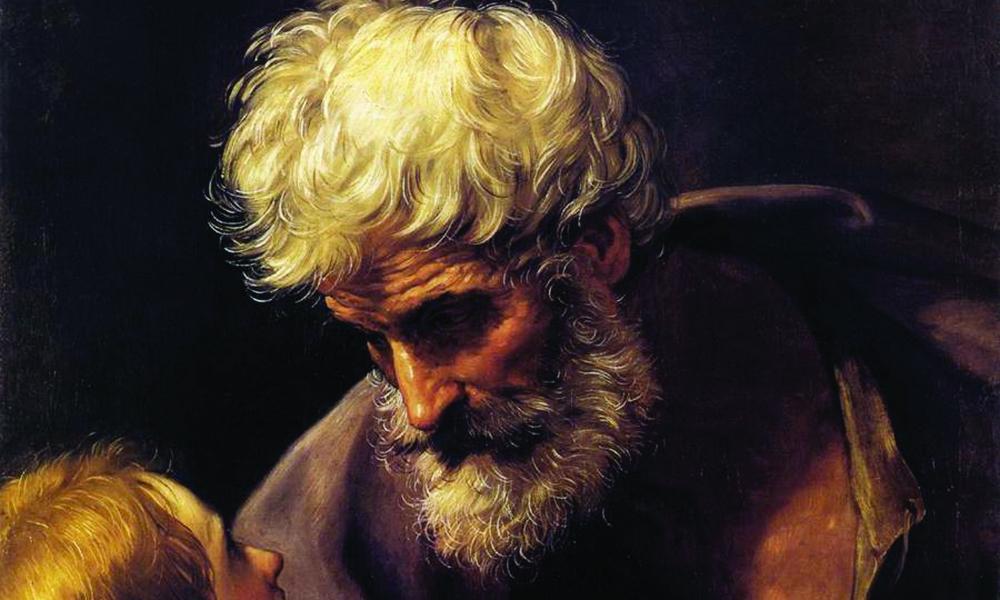
What Does the Church Mean When It Says That the Sacred Scriptures Are Inspired?
Seminary Professors Talk Scripture
Seminary Professors Talk Scripture
In plain terms, the notion of the sacred Scriptures as inspired means that what is in the Scriptures is what God wants to be there, i.e. the Holy Spirit is behind the human words through which God communicates to us. Because of this inspiration of the Holy Spirit, the human words that comprise the Scriptures are trustworthy in regard to both faith and the moral life and contain the revelation of who God is to us, and of who we are in relation to God and to each other.
– Father Robert Schoenstene, S.S.L.,
When the Church speaks of the inspiration of sacred Scripture, it affirms that these writings have God as their source, and that they reveal knowledge of God that, left to ourselves, we humans could never attain. One biblical text, 2 Tim 3:15-17, provides a foundation for the concept of inspiration when it states that the sacred writings “are able to give you wisdom for salvation through faith in Jesus Christ.” It also employs a rarely used Greek word, theopneustos, which literally means “God breathed” or “God inspired,” when it states that “All Scripture is inspired by God …”
The “fact” of the inspiration of sacred Scriptures has been affirmed from the beginning of the Church by both the Eastern and Western Church Fathers. At the same time, it is not clear from their writings how these early Christian writers understood inspiration, i.e., how it actually takes place. The Church has made clear that any ultimate definition of inspiration must consider the very real contributions of both its divine and human authors. Further, the Church has eliminated three inadequate definitions of inspiration because they fail to recognize this balance of divine – human cooperation, namely mechanical dictation, mere assistance and subsequent approbation.
Mechanical dictation, often depicted in stained-glass windows as an evangelist writing on a scroll as an angel whispers in his ear, places too much emphasis on God while reducing human cooperation to mere passivity. Mere assistance, on the other hand, describes inspiration as the Holy Spirit merely protecting a human writer who writes freely from error. This definition overemphasizes the role of human contribution at the expense of the divine. Finally, subsequent approbation states that a book of sacred Scripture is inspired only upon its acceptance by the Church as a sacred text. Again, this definition elevates the role of the human community while almost ignoring altogether the active role of the Holy Spirit throughout all the stages of the text.
Having said what inspiration is not, the Church is now thinking more about the whole process of inspiration. It explores this matter in the 1993 document, “The Interpretation of the Bible in the Church,” issued by the Pontifical Biblical Commission. In particular, it recognizes that a believing community passes down traditions that capture faithfully their experience of God, and that subsequent generations also experience these as compelling and pass them on until eventually the traditions reach the written form that we now call sacred Scripture.
What is an ecumenical council?
An ecumenical council gathers the bishops from the whole Catholic Church to discuss and settle issues dealing with Church doctrine and practice. The word ecumenical itself comes from the Greek, meaning “the inhabited world.” It originally referred to the Roman Empire.
The first “ecumenical” council was the Council of Jerusalem and is recorded in the Acts of the Apostles. It addressed the observation of biblical law by, especially, Gentile converts in the early Christian community. It is generally referred to as the Apostolic Council rather than by the name of ecumenical.
There have been 21 ecumenical councils
1. First Council of Nicaea (325)
2. First Council of Constantinople (381)
3. Council of Ephesus (431)
4. Council of Chalcedon (451)
5. Second Council of Constantinople (553)
6. Third Council of Constantinople (680-681)
7. Second Council of Nicaea (787)
8. Fourth Council of Constantinople (869-870)
9. First Council of the Lateran (1123)
10. Second Council of the Lateran (1139)
11. Third Council of the Lateran (1179)
12. Fourth Council of the Lateran (1215)
13. First Council of Lyon (1245)
14. Second Council of Lyon (1274)
15. Council of Vienne (1311-12)
16. Council of Constance (1414-1418)
17. Council of Basel, Ferrara and Florence (1431-1445)
18. Fifth Council of the Lateran (1512-14)
19. Council of Trent (1545-1563)
20. First Council of the Vatican (1870)
21. Second Council of the Vatican (1962-65)
What was Vatican II?
Vatican II is a common way of referring to the Second Council of the Vatican, or Second Vatican Council. The 21st ecumenical council derived its name from the fact that it was held at St. Peter’s Basilica in the Vatican. It opened under Pope John XXIII on Oct. 11, 1962, and closed under Pope Paul VI on Dec. 8, 1965.
The primary concern of Vatican II was to address the relations between the Roman Catholic Church and the modern world. As Bishop Christopher Butler, OSB, put it, Vatican II represented the Church’s attempt to study and understand itself. This undertaking involved the two dimensions of understanding the Church in itself through a looking back to the Church’s roots in Scripture and tradition and an understanding of the Church in relation to the world.
– Elizabeth Nagel, S.S.D.



